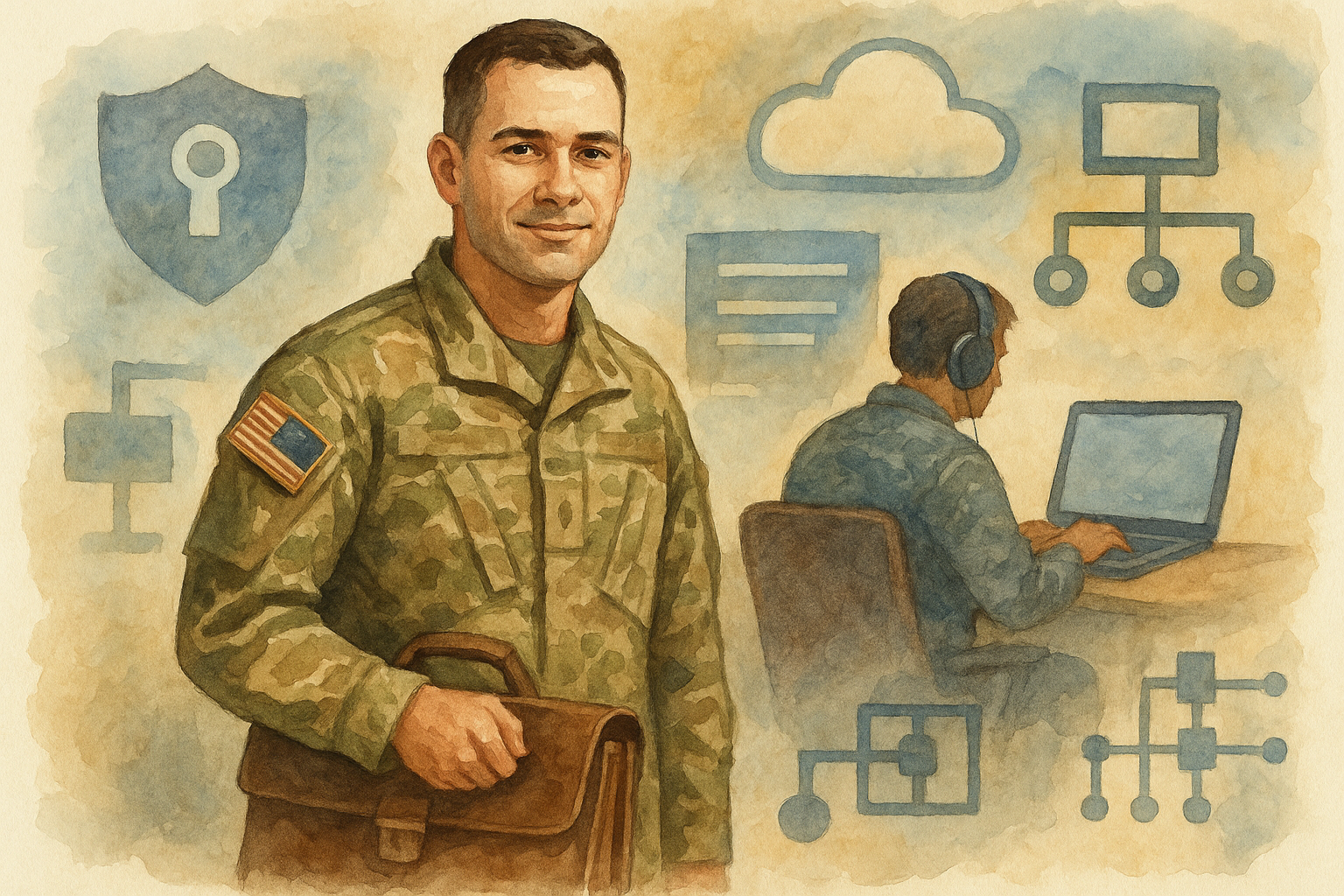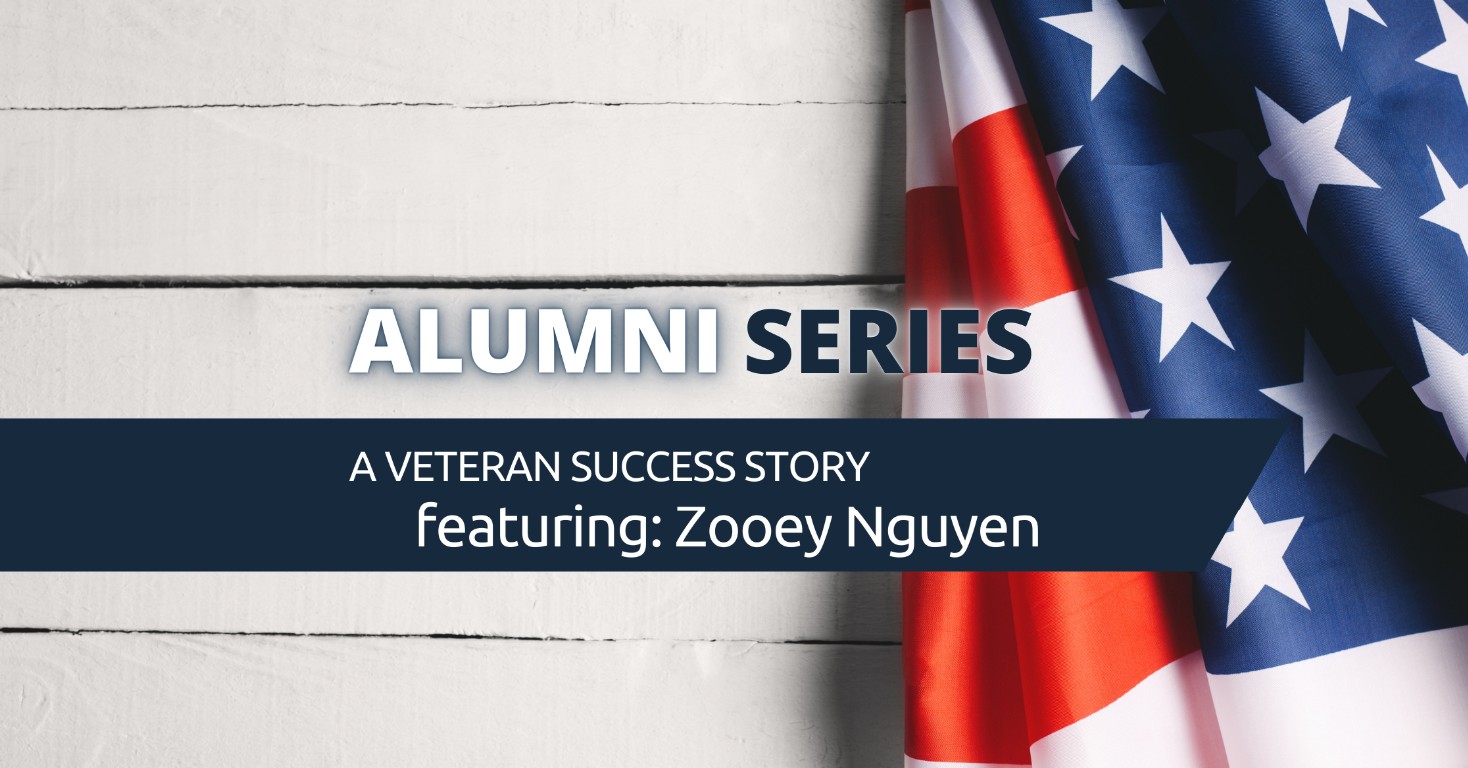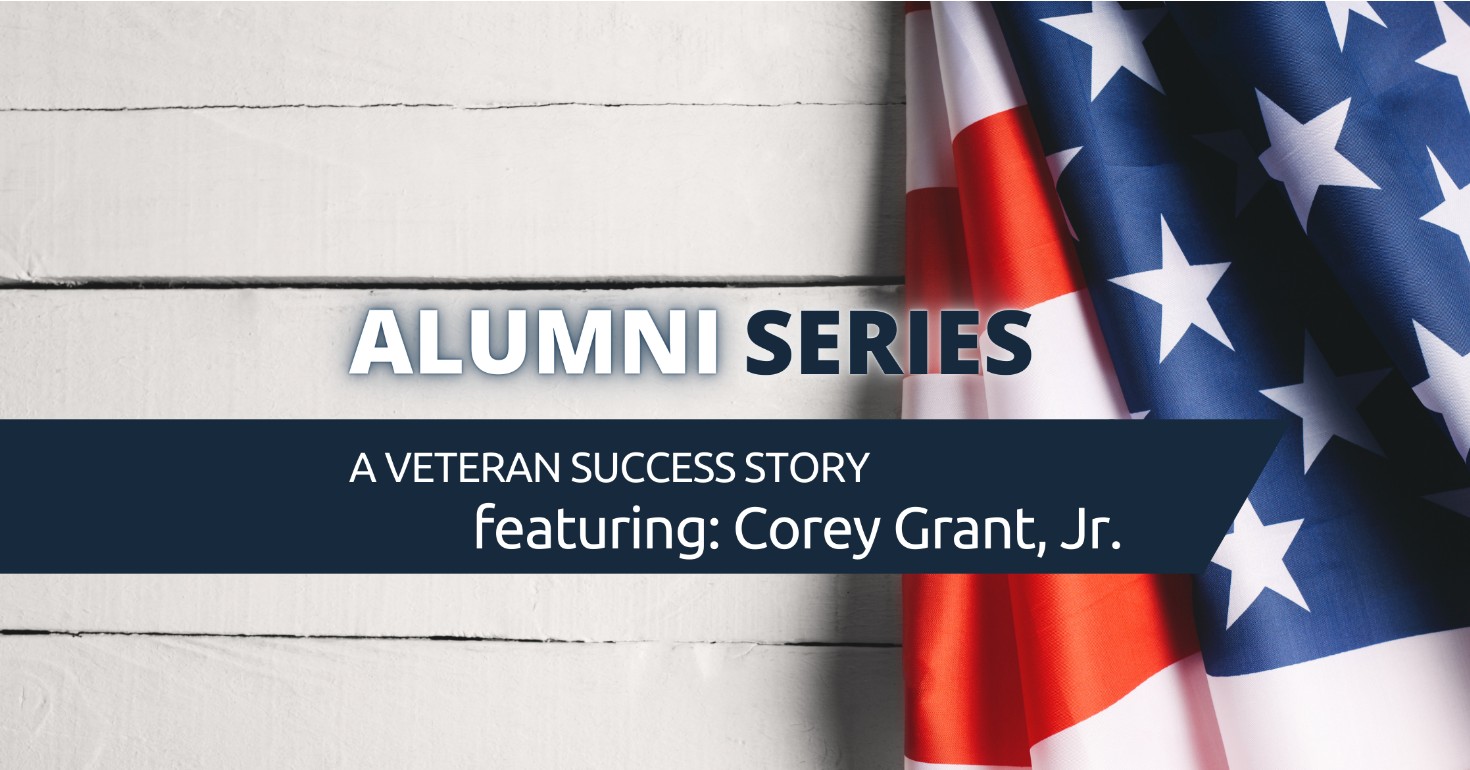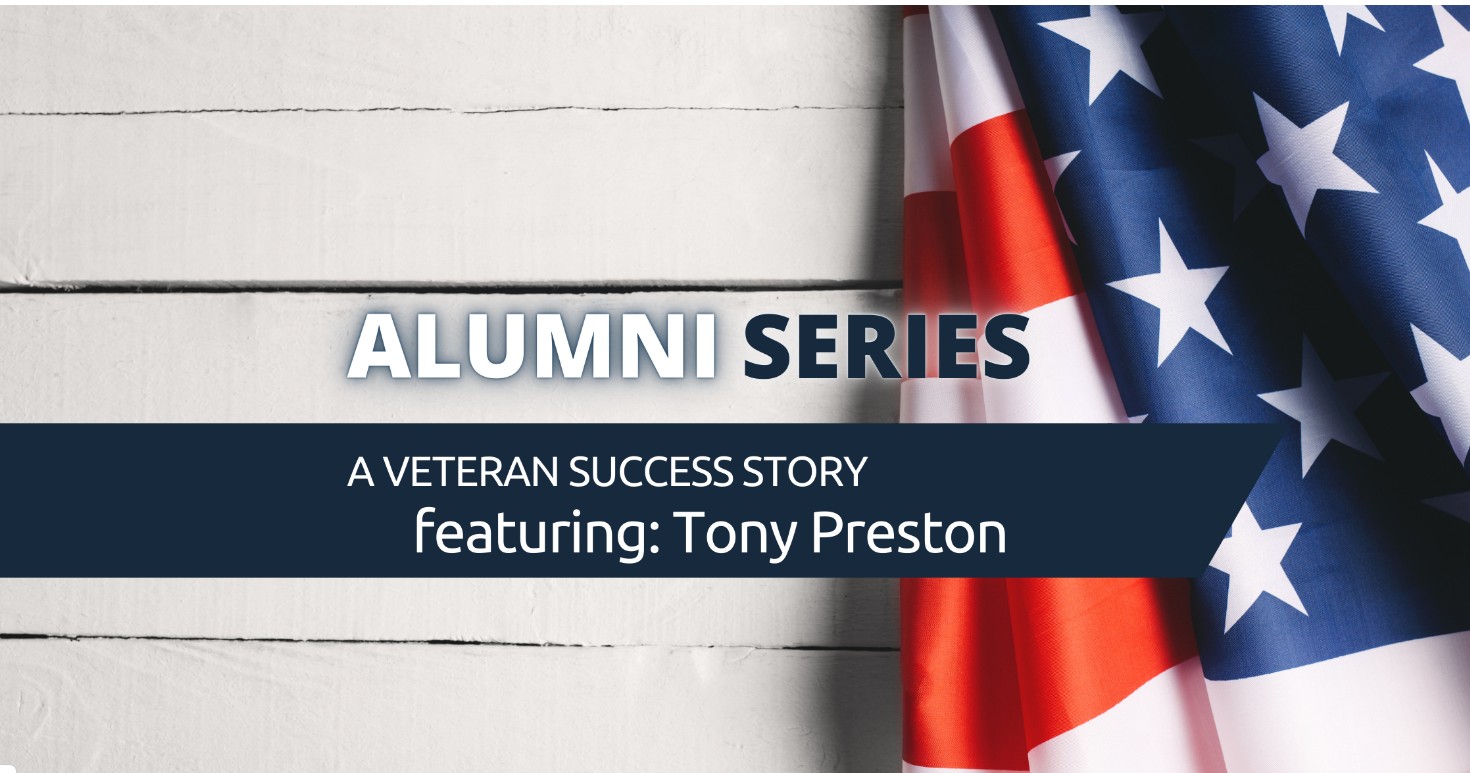
Ready to land your first IT role in 2025? Veterans have a unique advantage as tech employers compete for mission-driven professionals with real-world leadership skills. These key insights distill the essential steps and strategies to fast-track your IT transition and make your experience a career-launching superpower.
Seize your veteran advantage: follow these steps, tap into the right resources, and turn your service into tech success—the 2025 IT market is ready for you. Dive into the full article for in-depth guidance and your action plan.
Picture this: over 750,000 IT jobs going unfilled across the U.S. in 2025, with tech leaders actively competing for talent who know how to deliver under pressure.
If you’re a veteran—or about to transition—your experience isn’t just relevant, it’s exactly what today’s IT hiring managers crave. Employers are searching well beyond traditional resumes, laser-focused on candidates who can lead when it counts, adapt on the fly, and keep security airtight. Sound familiar?
Why is now the breakthrough moment for veterans in tech? Several powerful trends are converging:
But opportunity is only part of the equation.
Translating your military skills for civilian recruiters, navigating certifications, and plugging into the right mentorship networks—these are what turn potential into real offers. You’ll discover:
If you want your next mission to be a flexible, well-paid IT role—one where your leadership and discipline get real-world results—you’re in the right place.
Ready to see how the 2025 job market is stacking the odds in your favor? Let’s break down the numbers, the opportunities, and the exact steps veterans can take to land their first IT job—and thrive from day one.
The tech hiring landscape in 2025 is dramatically in veterans’ favor.
Skyrocketing demand, talent shortages, and an urgent push for cybersecurity are forcing employers to look outside traditional pipelines—and military experience is exactly what they want.
By Q2 2025, over 750,000 unfilled IT jobs are projected across the U.S., with cybersecurity roles at the top of that list.
Companies are scrambling to fill these gaps, leading to:
If you’re considering tech, this climate means “mission critical” hiring is now open to you.
Employers are actively targeting veterans for:
Visualize this: A veteran transitions from managing field ops to overseeing $2 million cloud infrastructure projects—because employers know those skills align perfectly.
| IT Role | Veteran Strengths | 2025 Demand | Common Entry Route |
|---|---|---|---|
| Cybersecurity Engineer | Security discipline | Explosive growth | Certs, VetSec, MSSA |
| Cloud Developer | Problem-solving | Persistent shortage | AWS Educate, SkillBridge |
| IT Project Manager | Leadership, teamwork | Expanding rapidly | FourBlock, PMI courses |
| Network Engineer | Adaptability, process | High nationwide need | DoD SkillBridge, job fairs |
| IT Support Specialist | Flexibility, comms | Remote flexibility is being scaled back | Entry-level certs, online |
Veterans are often eligible for extra perks, including:
Expect IT starting salaries for tech-ready veterans to range from $60,000-$95,000 in 2025, depending on specialty and clearance.
“Picture this: You get interviewed on a Friday, start onboarding remotely by Monday—because your military credentials make you the safest new hire in tech.”
Landing your first IT job has never been more accessible to veterans—with opportunity, flexibility, and salary growth that reward your unique skill set.
Veterans bring a skillset to IT that’s so much more than just technical know-how.
Think of it like this: leading a squad is project management in motion—deadline-driven, goal-focused, and always under pressure.
Companies are eager for that level of discipline and leadership, which rarely comes from a textbook alone.
Here’s where veterans’ experience maps perfectly to tech:
These strengths aren’t just buzzwords. IT hiring managers know that veterans stay cool under fire, deliver results, and adapt fast.
"Picture this: A cybersecurity incident hits at 2 a.m.—your military calm and clear checklist thinking make you the go-to on the tech team."
Veterans are built for resilience.
This edge matches the industry’s most urgent needs: Cybersecurity, cloud computing, and IT support are predicted to add over 90,000 jobs by 2025.
Still, some talents need rebranding for civilian IT:
Don’t downplay technical troubleshooting, gear maintenance, or process documentation—those map directly into IT support, systems engineering, and QA roles.
Veteran strengths—leadership, process discipline, adaptability—aren’t just relevant, they’re in demand.
To really shine, translate your service into tech language and use real-world impact stories.
"Landing a civilian IT job is less about ‘starting over’ and more about reframing the strength you already have."
Picture this: You’re sorting through IT careers like you’d choose a mission assignment—looking for the perfect fit, not just any job.
Start by lining up your core strengths from service, such as:
Ask yourself: “Which moments from my service do I want to repeat—and which do I want to avoid?” That’s your signpost for finding your IT lane.
Let’s break down five top IT paths—each with must-know info for veterans aiming to plug in fast:
Whether you want stability, remote work, or contract flexibility, IT roles deliver choices:
“Veterans aren’t just applicants—they’re the talent tech can't afford to miss.”
Use this simple flowchart to match your top skill and interest to the right field:
Mapping your mission means connecting your service experience with an IT role that fits your life now—and the future you want. Dive in where your strengths shine, leverage flexible pathways, and remember: Your skillset is already in demand.
Picture this: you’re ready to launch your IT career, but the niche you choose—and the certifications you earn—can put you miles ahead.
The 2025 IT certification landscape has clear winners for veterans:
“In 2025, certification is your passport—86% of veteran job training graduates land interviews within six months.”
Selecting the right path is more than just following trends.
Think about where you shine best, then pick one of these starter routes:
A quick tip: entry-level certs can often be completed in 6-12 weeks and cost between $200-$700—often FREE for veterans using the GI Bill or SkillBridge.
Make your military experience work double time by tapping veteran-focused programs:
Success scenario: “Imagine going from comms in the Air Force to certified cybersecurity pro, all before your terminal leave ends.”
Re-entering the classroom doesn’t have to be intimidating.
“Veterans who turn discipline into study habits are certification machines—it's just about aiming your training at a new target.”
Every certificate or skill you earn tells employers you’re serious—and you know how to deliver results. Focus your fire, leverage your benefits, and chase the courses that match both your experience and your mission. In IT, training is your launch sequence: when you align the right steps, you’re cleared for takeoff.
Landing your first IT job isn’t just about what you know—it’s about how you show it.
Translating military roles into civilian, resume-friendly language is the single biggest hurdle for most veterans. The acronyms and MOS jargon that make perfect sense in a briefing don’t land with civilian recruiters searching for IT skills.
Think of your resume as your new “orders”—clear, direct, and free of insider-only lingo.
Picture this: You led a security team responsible for sensitive data on base. On your resume, that reads as:
Use job translators like O*NET’s Military Crosswalk or the Veterans Job Matcher for instant MOS-to-career matching.
Don’t just list duties—describe your impact with numbers and outcomes.
Recruiters love the STAR method (Situation, Task, Action, Result) because it’s concrete and highlights your results.
Example: “Faced with a critical system outage (Situation), I led a rapid response team (Task), coordinated cross-department troubleshooting and restoration (Action), and got operations back online within 45 minutes—beating the standard response time by 50% (Result).”
Quotable tip: "A STAR story turns ‘what you did’ into ‘why it matters’—and that’s what employers remember."
For every bullet point, ask: “So what?”
Highlight both hard skills (network security, systems admin) and soft skills (leadership, adaptability, teamwork).
Be ready to discuss how your service background fuels your tech drive—think of scripting sample answers to “Tell me how your military experience prepares you for IT” in interviews.
Swap camouflage for confidence by making every military skill, story, and stat count in your civilian tech job hunt. The right translation lets hiring managers see what you’re truly made of: a results-driven, team-first problem solver ready for any IT mission.
Landing your first IT job isn’t just about certifications and skills—it’s about who you know and who knows you. In today’s tech market, over 80% of new roles are filled via networking or referrals, not by cold online applications.
Veteran-focused networks are true shortcut keys for tech career entry. These communities connect you with hiring insiders, peer-to-peer tips, and personalized mentorship—resources proven to help veterans land jobs 2x faster than flying solo.
Top veteran networking platforms include:
You don’t need to “be a natural” at networking—you just need a plan. Busy readers can use these steps to unlock the power of veteran communities today:
“Hi [Name], I’m a transitioning service member exploring IT. I’d love your advice as someone established in the field. Would you be open to a quick Zoom chat?”
As one VetSec member put it: “One coffee chat landed me a mentor, a referral, and a new direction. One conversation can change your whole path.”
Picture this: you walk into a FourBlock resume clinic, unsure, but open. You meet a friendly industry mentor, swap stories, and within a month, they’ve referred your resume straight to a hiring manager.
Don’t stress about being “new” to networking—veteran circles are famously supportive. Peer introductions, mock interviews, and community support remove the guesswork.
The most actionable move you can make is simple: Show up and share your story. Veteran communities aren’t just contacts—they’re career accelerators designed for you. Saying yes to one event or message can jump-start an entire IT journey.
If you’re a veteran aiming for your first IT job in 2025, you’ll want every advantage you can get—and veteran-focused career services are built just for this moment.
These programs go far past traditional job boards.
They offer insider access to roles, expert mentorship, and support designed around the strengths and needs of military professionals entering tech.
Picture this: You connect with a team that understands both your service record and the IT landscape.
Here are some top support organizations guiding thousands of veterans each year:
“Veterans who use these resources report job placement rates above 90% and starting salaries that often exceed $60,000.” (That’s a data point worth sharing on LinkedIn.)
You don’t have to navigate resume writing or interviews alone.
With the right service, you can access:
Some even connect you with veteran coaches already working in leading companies.
Landing that first offer is just the start.
Many veteran programs:
“Smart veterans treat learning as an ongoing mission, not a phase.”
Imagine prepping for a new role in cloud engineering while joining an online cohort of fellow vets.
Or, picture logging in to a weekly TechVets webinar where you can ask, network, and get real advice—no uniform required.
Here’s how to take action today:
Lean into these veteran-specific career resources to convert your military experience into IT job offers, faster.
These programs don’t just get your foot in the door—they help you thrive once you’re inside.
Landing your first IT role in 2025 means understanding how major tech employers recruit—and where your veteran strengths can tip the scale.
Expect a process that moves quickly, often blending online screenings, technical skills tests, and culture-fit interviews.
Picture this: You’re logging in from your home office for a technical assessment, followed by a virtual panel interview. This hybrid hiring flow is the new normal, with 65% of tech leaders preferring remote assessments and onboarding.
The typical steps look like this:
Quick stat: Veteran-focused job programs report a 90% placement rate and average starting salaries near $60,000.
“Think of the IT hiring gauntlet like mission prep: every phase is a chance to show you don’t just survive pressure—you perform.”
Veterans have an edge when they:
Pro tip: Practice common behavioral questions out loud or with a mentor to make your impact stories shine.
Ready to talk numbers? Here’s where your preparation pays off:
One quotable reminder: “Veteran status isn’t just a checkbox—it’s a force multiplier in IT.”
Mastering these steps turns the hiring process from obstacle course to opportunity. Start strong, own your narrative, and use every stage to spotlight your unique value to the team.
Veterans stepping into IT in 2025 hold the keys to a uniquely strong career launchpad. Your service has already equipped you with the leadership, discipline, and mission focus that tech employers value most—now it’s about turning that into a tangible advantage.
You’re not starting from scratch—you’re translating proven experience into a sector hungry for exactly what you offer.
Most actionable ways to move forward:
Ready to turn possibility into progress? Here’s where momentum becomes reality:
You’ve already proven your ability to adapt, lead, and perform under pressure. In tech, those are superpowers.
Every application, connection, or new skill is more than a step—it’s a signal that your next mission is just beginning.
Remember: Tech is moving fast, but veterans move faster. Make your first move—this is your advantage year.
.png)
We're a worldwide community for online learning and teaching where anybody can acquire new skills and accomplish their objectives by connecting with others. We are dedicated to making a positive difference in the future of education.


